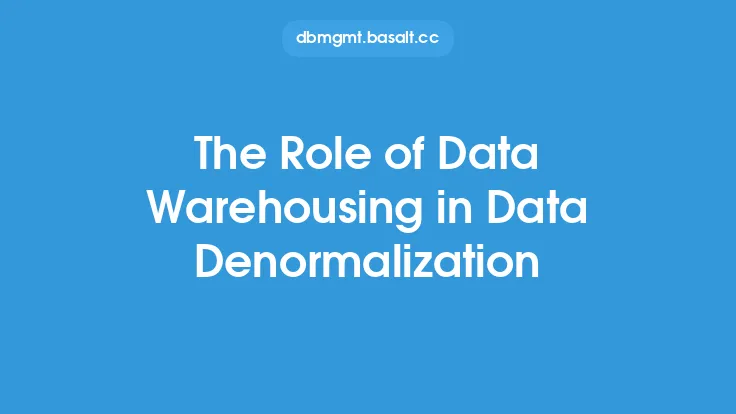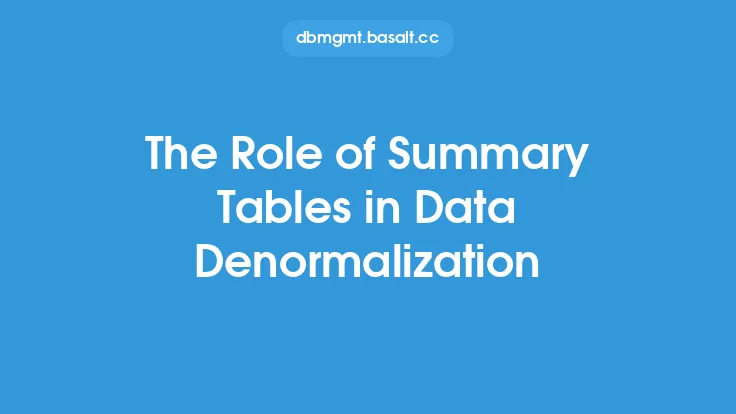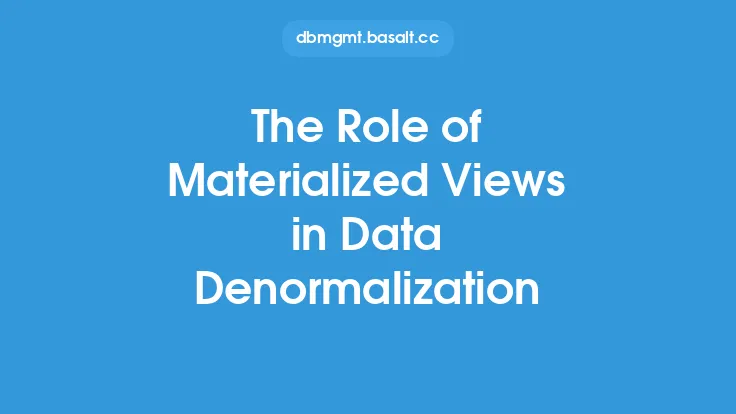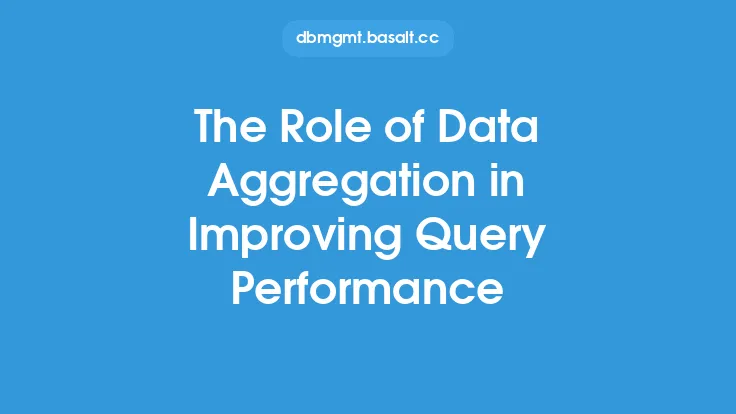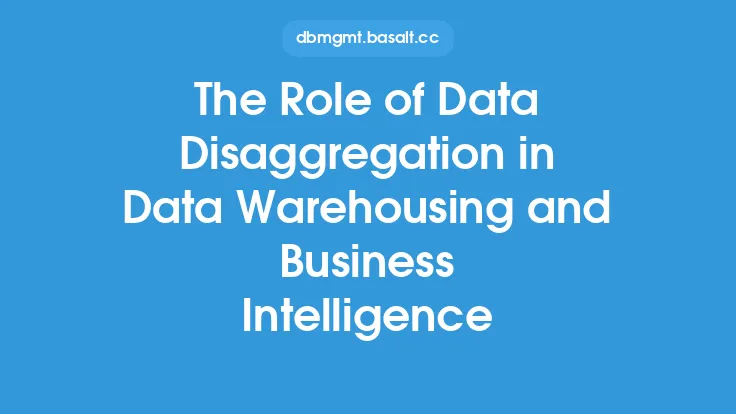Data denormalization is a crucial aspect of data management, and data marting plays a significant role in this process. Data marting is a technique used to optimize data storage and retrieval by creating a subset of data that is specifically designed for querying and analysis. In the context of data denormalization, data marting involves creating a denormalized view of the data that is optimized for querying and analysis.
Introduction to Data Marting
Data marting is a process of creating a physical or logical subset of data that is designed to support specific business needs or queries. A data mart is a repository of data that is extracted from various sources, transformed, and loaded into a single location. The primary goal of data marting is to provide fast and efficient access to data, enabling business users to make informed decisions. Data marting is often used in conjunction with data warehousing, where a data warehouse is a centralized repository of data, and a data mart is a subset of that data.
Data Denormalization Strategies
Data denormalization is the process of intentionally denormalizing data to improve query performance. Denormalization involves storing redundant data or aggregating data to reduce the number of joins required to retrieve data. There are several data denormalization strategies, including pre-aggregation, data duplication, and data partitioning. Pre-aggregation involves storing aggregated data, such as sums or averages, to reduce the need for complex calculations. Data duplication involves storing redundant data to reduce the need for joins. Data partitioning involves dividing data into smaller, more manageable pieces to improve query performance.
The Role of Data Marting in Data Denormalization
Data marting plays a crucial role in data denormalization strategies. By creating a denormalized view of the data, data marting can improve query performance and reduce the complexity of queries. A data mart can be designed to store pre-aggregated data, duplicate data, or partitioned data, depending on the specific business needs. Data marting can also be used to create a layer of abstraction between the physical data storage and the business users, enabling changes to the underlying data structure without affecting the business users.
Benefits of Data Marting in Data Denormalization
The benefits of data marting in data denormalization are numerous. Firstly, data marting can improve query performance by reducing the number of joins required to retrieve data. Secondly, data marting can simplify complex queries by providing a denormalized view of the data. Thirdly, data marting can enable business users to access data quickly and efficiently, without requiring technical expertise. Finally, data marting can provide a layer of abstraction between the physical data storage and the business users, enabling changes to the underlying data structure without affecting the business users.
Challenges of Data Marting in Data Denormalization
While data marting can provide numerous benefits in data denormalization, there are also several challenges to consider. Firstly, data marting can lead to data redundancy, which can result in data inconsistencies and errors. Secondly, data marting can require significant storage space, particularly if the data mart is designed to store large amounts of data. Thirdly, data marting can require significant maintenance and updates, particularly if the underlying data structure changes. Finally, data marting can require significant technical expertise, particularly if the data mart is designed to support complex queries.
Best Practices for Data Marting in Data Denormalization
To ensure the success of data marting in data denormalization, several best practices should be followed. Firstly, the data mart should be designed to support specific business needs or queries. Secondly, the data mart should be optimized for query performance, using techniques such as indexing and caching. Thirdly, the data mart should be designed to minimize data redundancy and ensure data consistency. Fourthly, the data mart should be regularly maintained and updated to ensure that it remains relevant and accurate. Finally, the data mart should be designed to provide a layer of abstraction between the physical data storage and the business users, enabling changes to the underlying data structure without affecting the business users.
Technical Considerations for Data Marting in Data Denormalization
From a technical perspective, data marting in data denormalization requires careful consideration of several factors. Firstly, the data mart should be designed to support the specific database management system (DBMS) being used. Secondly, the data mart should be optimized for the specific hardware and storage configuration being used. Thirdly, the data mart should be designed to support the specific querying and analysis tools being used. Fourthly, the data mart should be designed to ensure data security and integrity, using techniques such as encryption and access controls. Finally, the data mart should be designed to provide scalability and flexibility, enabling it to adapt to changing business needs and data volumes.
Conclusion
In conclusion, data marting plays a significant role in data denormalization strategies, enabling fast and efficient access to data and improving query performance. By creating a denormalized view of the data, data marting can simplify complex queries and provide a layer of abstraction between the physical data storage and the business users. While there are several challenges to consider, following best practices and careful technical consideration can ensure the success of data marting in data denormalization. As data volumes continue to grow and business needs become increasingly complex, the role of data marting in data denormalization will become increasingly important, enabling organizations to make informed decisions and drive business success.

